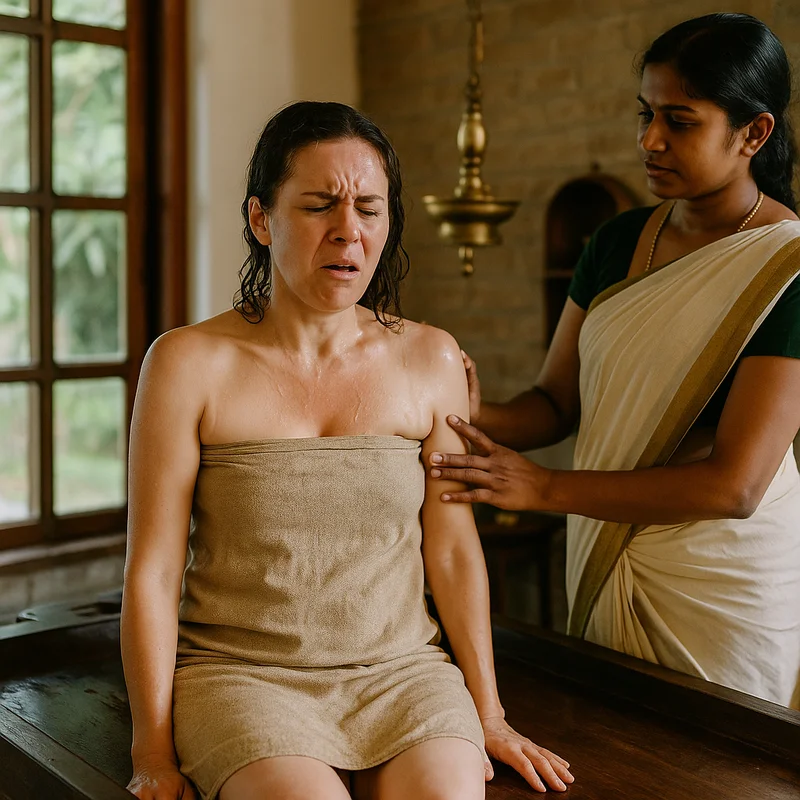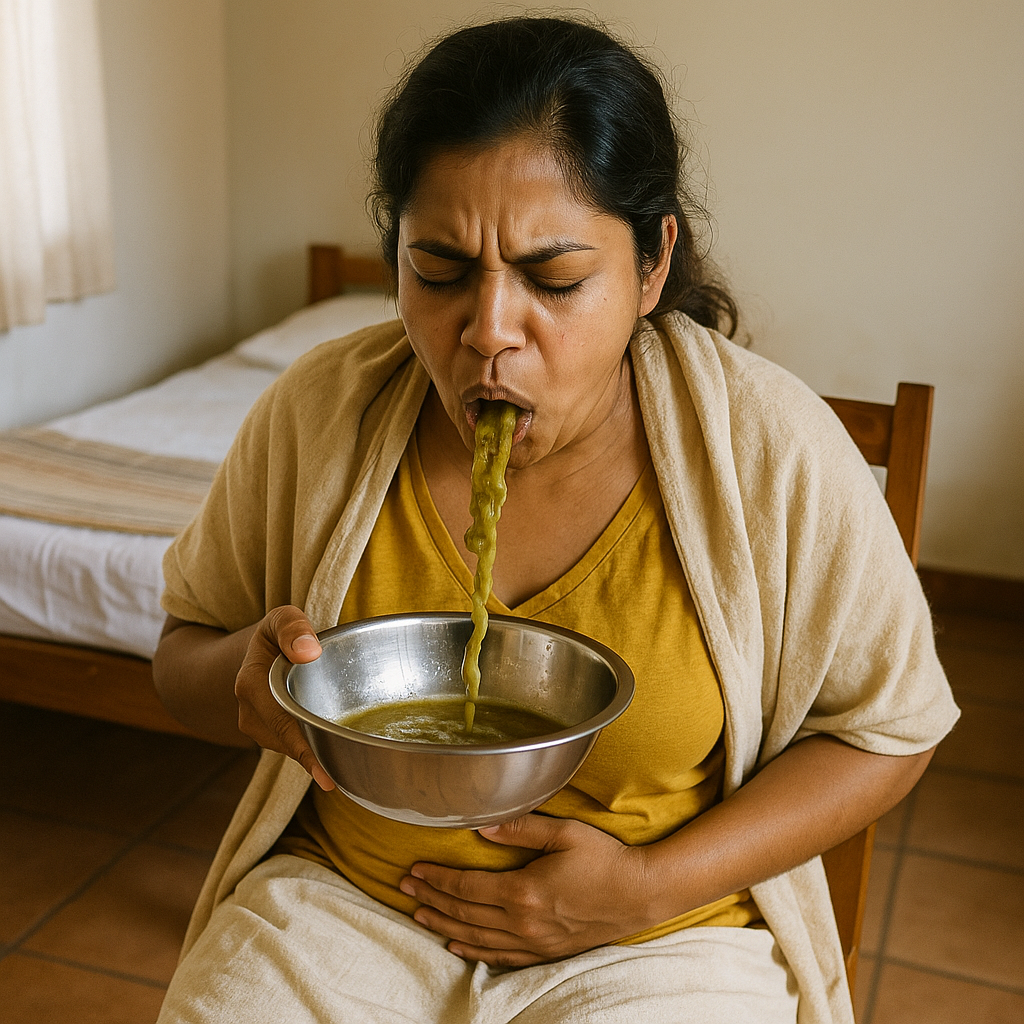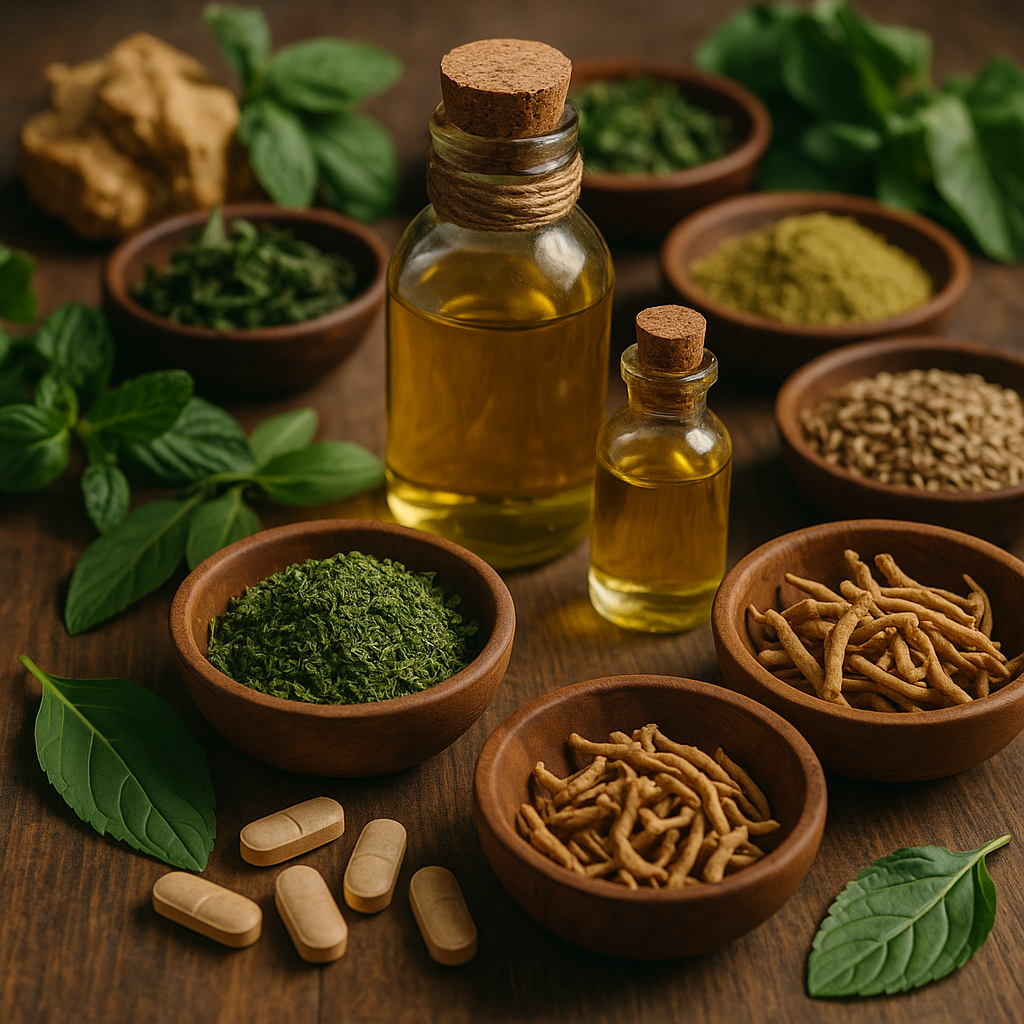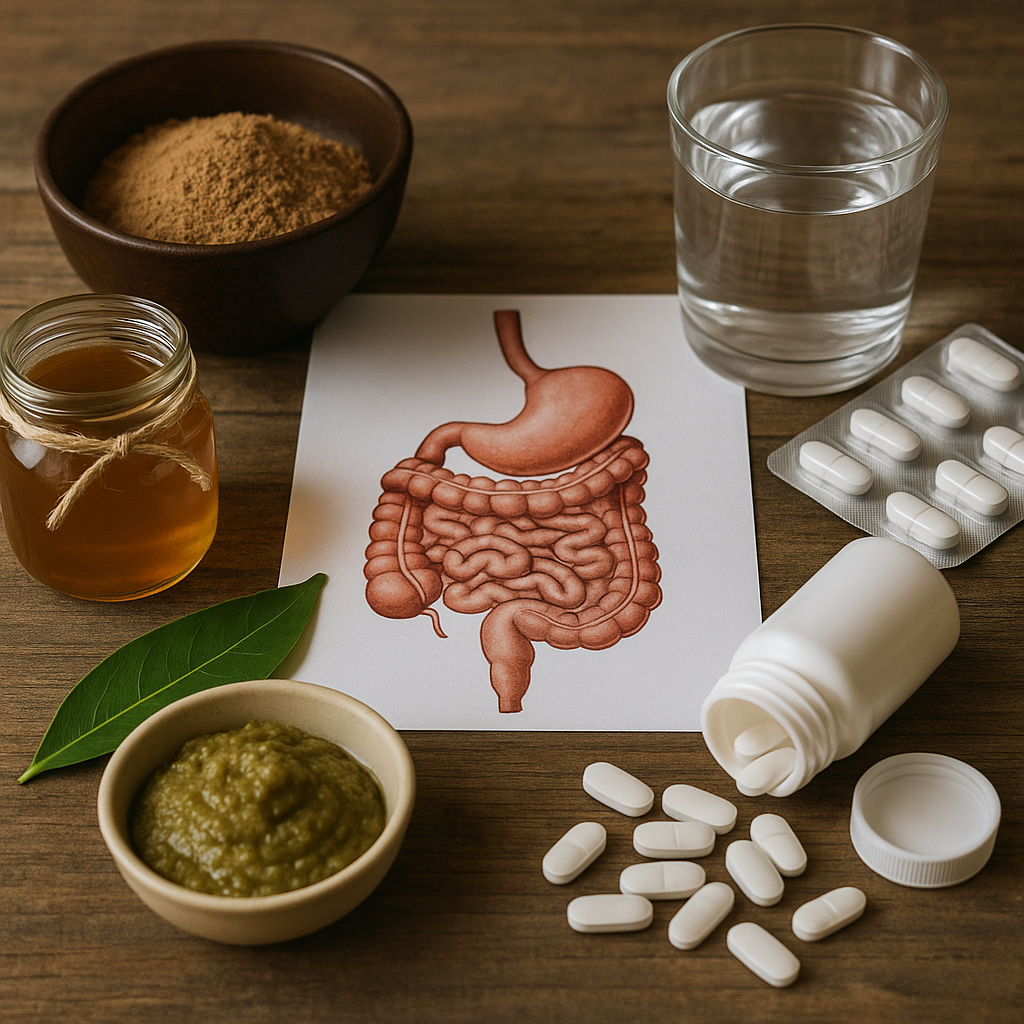Shop Now in Our Store
Virechana: An Ayurvedic Detox That’s Not for the Faint-Hearted (But Totally Worth It)

Introduction to Virechana
Okay, so here’s the thing — if you’ve ever felt like your body’s carrying around a little too much... everything, Virechana might just be the radical reset you didn’t know you needed. We're not talking juice cleanses or lemon water here. This is a centuries-old Ayurvedic purification therapy that involves, well, purging. Literally.
Virechana is one of the five core therapies under Panchakarma, Ayurveda’s deep detox and healing methodology. It specifically targets the Pitta dosha, which governs metabolism, digestion, and transformation in the body. Think of it like flushing out all the internal gunk — not just in your gut, but in your organs, your skin, your emotions even. Sounds dramatic? It kind of is.
But don’t mistake it for a rough ride. Done properly and under supervision, Virechana is elegant, precise, and deeply restorative. It’s not about making you run to the bathroom in agony. It’s about controlled cleansing — designed to purge excess toxins (ama), heat, and bile through the lower gastrointestinal tract.
You know that heavy, irritable, can’t-think-straight feeling that builds up over weeks or months? Virechana meets that head-on. It’s used to manage conditions like skin disorders (hello eczema and psoriasis), chronic acidity, migraines, liver issues, and even emotional overload. And believe me, when it works, you feel the lightness.
What you’ll get from this article:
-
A deep dive into how Virechana works, step by messy step
-
The history and wisdom behind it (because this isn’t just a random idea someone cooked up last year)
-
The real-world benefits — physical, mental, emotional
-
And yeah, the risks and who shouldn’t do it, because honesty matters
If you’re even slightly curious about Ayurvedic detox or you’re serious about cleansing from the inside out — keep reading. This is Virechana, unfiltered.

History and Origin of Virechana
Historical Background and Roots of Virechana
Let’s time-travel a bit. Long before “gut health” became a buzzword on TikTok, the sages of India were observing, recording, and refining bodily cleansing practices that put our modern methods to shame.
Virechana comes straight out of Ayurveda’s foundational texts — Charaka Samhita, Sushruta Samhita, and Ashtanga Hridayam. These aren't just ancient books. They’re meticulous manuals of human biology, nature, and medicine — written thousands of years ago, yet eerily relevant today.
What stands out is how systematic these texts are. They don’t just say “purge to feel better.” They lay out when, how, and why Virechana should be performed, and which herbs, timings, and body constitutions it works best for.
Back then, Virechana wasn’t seen as just a health measure. It was part of a spiritual lifestyle. The idea was that you can’t attain mental clarity or emotional stability unless your body is free from internal impurities. Clean body → clean mind → elevated spirit. Sounds simple, right? Try doing it after eating processed food for 20 years...
Ayurvedic Textual References about Virechana
Here’s where it gets deep. Charaka Samhita, in its Siddhi Sthana section, describes Virechana as the therapy of choice for disorders rooted in excessive Pitta dosha — think inflammation, ulcers, rashes, anger, and liver disorders. Not just physical heat, but mental heat too.
In Ashtanga Hridayam, there’s a passage that basically says (paraphrasing wildly here): “If the body is a temple, then Virechana is like spring cleaning the altar.” It’s that foundational. You don’t skip it.
These references don’t just highlight the technique. They also emphasize timing, individual constitution (Prakriti), and seasonal cycles. This isn’t a one-size-fits-all detox. Virechana, done well, is tailored to your body and life stage.
Traditional Use and Evolution of Virechana
Over time, Virechana found its way into Ayurvedic hospitals, rural clinics, even royal palaces. In Kerala, it’s been used for decades in Kottakkal Arya Vaidya Sala and other institutions, sometimes in combination with other therapies like Abhyanga (oil massage) and Swedana (steam therapy).
Fun fact? In olden times, it was sometimes performed in ashrams as a pre-requisite to spiritual training. Imagine showing up to your guru and he says, “Before meditation, go clear your intestines.” I mean... fair enough?
Today, it’s making a slow comeback among wellness seekers who are done with fads and looking for something deeper, more intentional — even if it involves uncomfortable honesty with your body (and toilet visits).
Purpose and Benefits of Virechana
Physical Health Benefits of Virechana
Let’s get right to it: Virechana is not some delicate “spa detox.” It’s a physiological intervention — a reset button for when your body’s internal trash pile has gotten way out of control.
Physically, it’s most famous for:
-
Improving liver function — Ayurveda sees the liver as Pitta's home base. Virechana helps clear excess bile and toxins that bog it down.
-
Relieving chronic constipation, acidity, and bloating — and I mean really relieving, not masking the symptoms.
-
Clearing the skin — conditions like psoriasis, eczema, acne? Many people report visible improvement post-Virechana. It's like the skin suddenly finds room to breathe.
-
Helping manage obesity and cholesterol — while it’s not a “weight loss” therapy per se, Virechana often initiates healthy metabolic shifts.
I’ve heard stories (and seen patients) who came in with decades of indigestion and walked out feeling like their gut just rebooted. It’s not magic. It’s science, just wrapped in herbal oils and Sanskrit.
Mental and Emotional Benefits of Virechana
Okay, this part doesn’t get talked about enough.
Virechana doesn’t just purge physical toxins. It’s also used — intentionally — to release emotional heat. Ever feel irritable for no reason? Like there’s too much fire inside your chest? Ayurveda sees anger, frustration, impatience as Pitta emotions. And if they’re stuck? You suffer.
Post-Virechana, people often report:
-
Increased mental clarity
-
Reduced anxiety and irritation
-
A strange sense of emotional lightness they can’t quite explain
It’s like a fog lifts — not always right away, but gradually over the days that follow. And no, I don’t have a double-blind study for that. But I’ve seen it too many times to ignore.
How Virechana Balances the Doshas (Vata, Pitta, Kapha)
Virechana is the Pitta-pacifier — that’s its primary doshic focus. But guess what? When you remove the excess Pitta, it often brings Vata and Kapha into better alignment too.
Here’s a rough breakdown:
-
Pitta: Directly reduced by removing heat and bile.
-
Vata: Indirectly calmed, because Virechana includes oiling and warmth beforehand.
-
Kapha: May get mobilized in small amounts, especially if combined with preparatory therapies like Snehana.
So even though it’s not targeting all three, the ripple effects often help the whole system re-balance itself. Which — if you’ve studied Ayurveda — is kind of the entire goal, isn’t it?
Detailed Procedure and Steps of Virechana
Preparation for Virechana Procedure
You don’t just show up and start purging.
There’s a full preparatory phase called Purva Karma, which includes:
-
Snehana (internal and external oleation) – You’ll take medicated ghee or oils for several days to loosen toxins and bring them into the GI tract.
-
Swedana (steam therapy) – After the body is “oiled,” it’s gently heated to melt those toxins further and get them moving.
This can take anywhere from 3 to 7 days, depending on your constitution, strength, and condition.
Fun moment: most people hate the ghee days. You wake up, drink warm oil, and spend the day feeling slippery inside. But weirdly, by day 3, it starts to feel kind of... cozy?
Step-by-step Guide of Virechana Procedure
Now for the main act:
-
Virechana Day: You arrive early, on an empty stomach.
-
You’re given a carefully measured dose of a purgative herbal decoction (often Trivrit Lehya or castor oil-based compounds).
-
Over the next few hours, you begin releasing waste through multiple bowel movements. It can range from 5 to 20+ rounds.
-
Water, light broths, and herbal teas are sometimes given to aid the process.
-
You’re observed for signs — the texture, smell, and color of the stool give clues about how deep the cleanse has gone.
It sounds intense. And it can be. But most people describe it more as “exhausting but relieving” than painful. Like your body is finally getting something off its chest (or gut, really).
Duration and Frequency Recommendations for Virechana
-
A single Virechana can last a day (with prep leading up to it)
-
Frequency? Typically once a year for healthy individuals. But in chronic cases (e.g., psoriasis), it might be done 2–3 times annually.
-
Seasonal guidance: Spring and Autumn are ideal for Virechana, when Pitta is naturally elevated or being pushed out of balance.
It’s not something to do impulsively or frequently. This is deep work.

Herbs, Oils, and Ingredients Used in Virechana
Key Herbs and Oils Essential for Virechana
The stars of Virechana aren’t fancy or rare. They're humble, powerful, and often bitter as heck.
-
Trivrit (Operculina turpethum) – A classic purgative herb used in lehya (paste) form.
-
Castor Oil (Eranda taila) – Powerful, penetrating, and effective for downward elimination.
-
Haritaki and Amalaki – Used in some formulations to balance Vata and Pitta.
-
Ghee (Clarified butter) – Not purgative, but critical in the preparation stage to lubricate and draw toxins inward.
In some cases, herbs like Senna or Aloe vera juice are used too, but only under expert supervision.
Benefits and Roles of Specific Ingredients in Virechana
-
Trivrit scrapes the intestinal walls and pulls toxins from the liver-bile axis
-
Castor oil pushes downward elimination forcefully — excellent for Kapha-Pitta cases
-
Ghee saturates the tissues (Snehana) and helps mobilize ama from the deeper tissues
These herbs aren’t just “laxatives.” Their role is more intelligent — they work at different levels: cellular, systemic, and emotional.
Where and How to Source Quality Ingredients for Virechana
This part matters — quality is everything.
-
Always source herbs from reputed Ayurvedic pharmacies — look for GMP-certified brands.
-
For ghee, opt for A2, grass-fed cow ghee, ideally homemade or from traditional dairies.
-
Stay away from generic castor oil sold for cosmetic use. You want cold-pressed, food-grade, medicinal-quality oil.
If your practitioner says, “Oh, I’ll just mix something up,” ask questions. Trust your gut (literally, in this case).
Indications and Contraindications for Virechana
Health Conditions and Symptoms Indicating Virechana
Here’s where Virechana really shines.
Indicated for:
-
Chronic skin diseases: psoriasis, eczema, acne, dermatitis
-
Liver disorders: hepatitis, fatty liver, sluggish bile
-
Digestive problems: hyperacidity, IBS (with Pitta symptoms), chronic constipation
-
Pitta-dominant emotional issues: anger, frustration, rage
-
Autoimmune conditions: where inflammation plays a key role
It’s not a cure-all, but when matched correctly, it’s shockingly effective.
Potential Risks and Contraindications of Virechana
Let’s not pretend this is risk-free.
Contraindicated in:
-
Very weak or emaciated individuals
-
Pregnant or lactating women
-
People with uncontrolled diabetes or severe dehydration
-
Those recovering from surgery or trauma
-
If you have Vata disorders like anxiety, tremors, or joint disorders, this must be very carefully considered
Also: if you’re terrified of the bathroom and don’t want to be vulnerable — maybe wait.
Who Should Avoid Virechana or Seek Expert Advice
Basically, anyone with:
-
An unstable medical condition
-
No access to professional Ayurvedic guidance
-
Zero commitment to aftercare (it’s not over when it’s over)
This isn’t something you DIY after watching a YouTube video. Please, don’t.
Aftercare and Post-procedure Recommendations for Virechana
Recommended Lifestyle Adjustments After Virechana
So you survived the purge. Congrats. But now comes the real challenge — reintegrating into your daily life without undoing all that internal spring cleaning.
The immediate post-Virechana phase is called Samsarjana Krama — a structured refeeding and rebalancing process. Think of it like reintroducing the body to “normal” gently, kind of like soothing a baby back into a routine after a growth spurt.
Key lifestyle tips:
-
Rest. Seriously. No gym, no late nights, no travel. Your body’s in deep repair mode.
-
Avoid extreme temperatures — hot baths, sun exposure, or chilling AC drafts.
-
Mental rest is just as important: no overthinking, arguments, or binging news feeds. Your nervous system needs calm.
This phase can last 3 to 7 days, depending on how deep the cleanse was. Trust the slowness — it’s where the magic settles.
Diet and Nutrition Guidelines Following Virechana
This is non-negotiable. If you eat pizza right after Virechana, Ayurveda weeps.
You’ll follow a graduated diet:
-
Rice gruel (Manda) — watery, warm, bland.
-
Light khichari — soft rice-lentil porridge, minimal spices.
-
Slowly reintroduce cooked vegetables, mild spices, and eventually normal meals.
No:
-
Fried food
-
Cold food or drinks
-
Leftovers, sugar, processed anything
Yes:
-
Warm, moist, simple meals
-
Ghee (sparingly)
-
Herbal teas like cumin-coriander-fennel
Eat consciously. This isn’t about willpower; it’s about protecting the delicate flame of digestion that’s just been rekindled.
Common Mistakes and Precautions Post Virechana
-
Going back to caffeine too quickly
-
Overeating “healthy” food (too much is still too much)
-
Ignoring emotional shifts — some people get surprisingly sensitive or weepy post-Virechana. It’s normal.
-
Skipping follow-ups — your Vaidya may need to adjust things based on your recovery.
Take it slow. Be kind to your gut. It just went to battle for you.

Scientific Studies and Modern Research on Virechana
Research Validating the Benefits of Virechana
Let’s talk evidence — because as much as Ayurveda relies on tradition and clinical experience, modern research is finally catching up.
Studies published in journals like the AYU Journal, Ancient Science of Life, and even some PubMed-indexed trials show promising results for Virechana in managing:
-
Psoriasis
-
Hyperlipidemia (high cholesterol)
-
Chronic constipation
-
Non-alcoholic fatty liver disease
-
Hormonal imbalances (like PCOS)
One 2021 study showed that patients undergoing Virechana had significantly reduced markers of inflammation (CRP, ESR) post-therapy. Another trial showed better liver enzyme profiles in hepatitis patients.
Are these randomized control trials with large sample sizes? Not always. But the direction is promising.
Clinical Trials and Evidence Supporting Virechana
Notable trials:
-
Kerala University of Health Sciences ran studies on Panchakarma protocols for skin disorders, showing Virechana improved symptoms in more than 70% of cases.
-
Banaras Hindu University (BHU) published a pilot study showing improved bile flow and lipid regulation post-Virechana.
-
Clinics like AVP Research Foundation continue to document longitudinal outcomes, especially for metabolic and autoimmune diseases.
While more rigorous data is needed, the clinical efficacy and patient satisfaction levels are undeniably strong.
Comparison Between Ayurvedic and Conventional Methods Related to Virechana
Let’s be real. Virechana isn’t a replacement for conventional gastroenterology. It’s a complement — often used when chronic, recurring issues aren’t fully resolved through pills.
Conventional:
-
Targets symptoms with antacids, steroids, antibiotics, etc.
-
Fast results, sometimes with long-term side effects
Virechana:
-
Aims at root causes through detox and dosha balancing
-
Slower, holistic, with fewer relapses when properly followed
Both have a place. But for chronic, lifestyle-driven diseases, Virechana brings a depth that modern tools sometimes overlook.
Real-Life Testimonials and Experiences with Virechana
Patient Stories and Experiences with Virechana
Meet Priya. 34, marketing exec, struggling with adult acne and bloating for years. She did one round of Virechana at a Kerala center — and yeah, she hated the ghee days. But two months later, her skin? Glowing. Bloating? Gone. “It felt like I could finally breathe through my stomach,” she said.
Or Rajesh, 52, with borderline fatty liver. After three weeks of Panchakarma including Virechana, his enzymes normalized, energy returned, and for the first time in years, he slept through the night.
And me? I tried a mild Virechana two years ago. Wasn’t fun. But something clicked afterward — my caffeine cravings dropped, I stopped snapping at people for no reason, and my digestion got... smart. I don’t know how else to say it. Smart.
Results Achieved and Realistic Expectations from Virechana
You won’t become a monk or superhero overnight. But you will likely experience:
-
Clearer skin
-
Lighter digestion
-
Sharper mind
-
Emotional stability
-
A strange, peaceful kind of joy
But only if you respect the process — before, during, and after.
Conclusion and Final Thoughts on Virechana
So, what’s the final verdict?
Virechana is not for everyone. But for those it’s meant for, it can be life-changing.
We’ve explored how it works, why it matters, what to expect, and who should (or shouldn’t) do it. You’ve seen the science, the stories, the philosophy. And maybe you're now sitting there thinking, “Wait... maybe this is what I need.”
Good. Think about it.
Just know this: Virechana isn’t about “fixing” you. It’s about giving your body the space and support to fix itself. And when it does? It’s like your cells start speaking a cleaner, quieter language.
If you’re ready to explore what this ancient therapy can do for your modern body...
👉 Schedule a personalized consultation at Ask-Ayurveda.com
Because no two Virechana experiences are the same — and yours should be uniquely tailored.
Frequently Asked Questions (FAQ) About Virechana
1. Is Virechana safe to do at home?
Absolutely not. Virechana requires expert supervision, customized herbal formulations, and post-care monitoring. Doing it solo can lead to dehydration, electrolyte imbalance, or worse.
2. How long does the whole Virechana process take?
The entire process — including preparation and recovery — can take 10–14 days. The purgation itself happens over a single day, but the before-and-after phases are equally important.
3. Can I eat normally after Virechana?
No. A specific refeeding protocol must be followed, starting with rice gruel and light khichari. Jumping back into normal food can disrupt your digestive recovery and undo benefits.
4. Does Virechana help with weight loss?
It may result in some weight loss due to detox and fluid elimination, but it's not a weight loss therapy. However, it can kickstart metabolic balance and reduce food cravings.
5. Will I feel weak after Virechana?
Some fatigue is normal for a few days, but it's often followed by a surge of energy and clarity once your system resets. If weakness persists, your aftercare may need adjustment.
6. Is Virechana suitable for people over 60?
It depends on the person’s overall strength and medical conditions. Many older adults benefit from it, but only under the supervision of an experienced Vaidya.
This article is checked by the current qualified Dr Sujal Patil and can be considered a reliable source of information for users of the site.
Got any more questions?
Ask Ayurvedic doctor a question and get a consultation online on the problem of your concern in a free or paid mode.
More than 2,000 experienced doctors work and wait for your questions on our site and help users to solve their health problems every day.

